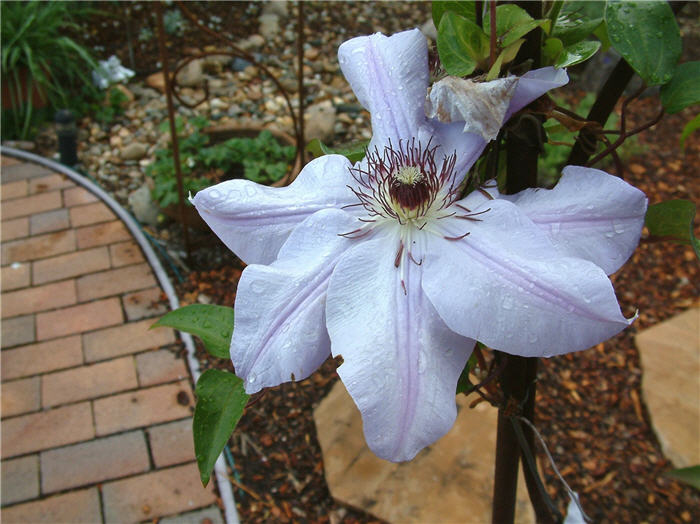| Botanical Name: Clematis hybrids | |
| Common Name: Hybrid Clematis |

-
Anatomy
-
Culture
-
Design
Plant Type
Vine
Height Range
6-12'
Flower Color
Blue, Lavender, Pink, Purple, Red, White, Multi-Colored
Flower Season
Spring, Summer
Leaf Color
Green, Light Green
Bark Color
n/a
Fruit Color
n/a
Fruit Season
n/a
Sun
Full
Water
Medium
Growth Rate
Moderate
Soil Type
Loam
Soil Condition
Average, Rich, Well-drained
Soil pH
Neutral, Basic
Adverse Factors
n/a
Design Styles
English Cottage, Mediterranean, Ranch, Spanish, Tropical
Accenting Features
Fragrance, Showy Flowers, Specimen
Seasonal Interest
Spring, Summer
Location Uses
Background, Entry, Perennial Border, Shrub Border, Foundation, Walls / Fences
Special Uses
Container, Screen, Small Spaces
Attracts Wildlife
Butterflies
Information by: Stephanie Duer
Photographer:
Photographer:
-
Description
-
Notes
These climbing plants produce wonderful flowers and dark green foliage. The species is made up of hundreds of varieties, and many of them are fragrant, though not strongly scented.
Plant in light, loamy, well-drained soil. There is an adage regarding clematis: "heads in the sun; feet in the shade," follow this! But there is a caution: don't place it where it will bake, for in our hot, dry summers, it is possible to get too much of a good thing. Timing of pruning depends on when the clematis blooms: as a general rule, spring and early summer blooming clematis ought to be pruned immediately after flowering; mid-summer and fall bloomers can be pruned in the spring. Clematis are twining and need support.